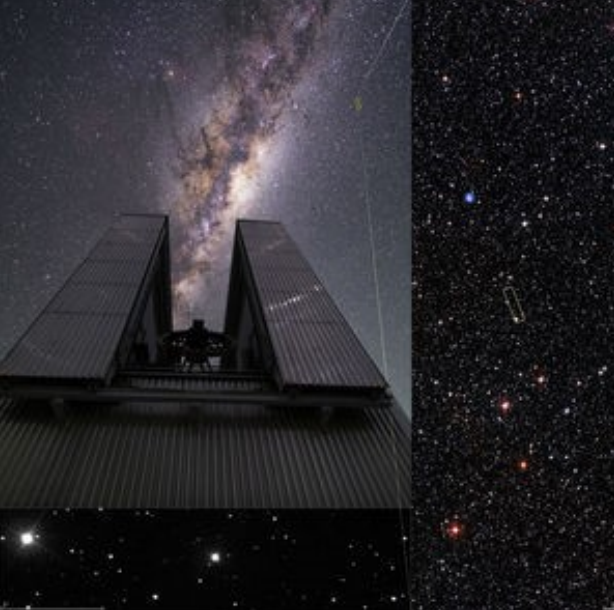Data
You will be redirected to cenamweb.org in 15 second(s). The JINA-CEE website is not updated anymore. The archived website can still be reached through the CeNAM website.
Discovery of the Brightest Ultra-Metal Poor Star

A Brazilian–American team including JINA-CEE scientist Vinicius Placco has observed the brightest ultra metal -poor star ever discovered by using two of ESO’s (European Southern Observatory) in Chile. The star is named 2MASS J18082002–5104378 and it is a rare relic from the Milky Way’s formative years. As such, it offers astronomers a precious opportunity to explore the first stars that sprung to life within our galaxy.
2MASS J18082002–5104378 was spotted in 2014 by ESO’s New Technology Telescope (NTT). Follow-up observations using the Very Large Telescope (VLT) discovered that, unlike younger stars such as our Sun, this star shows an unusually low abundance of what astronomers call metals, namely all elements except of hydrogen and helium. In fact, it is so devoid of these elements that it is known as an UMP, or an ultra metal-poor star.
Metal-poor stars are thought to be ubiquitous in the early Universe, but now they have become a rare sight within both the Milky Way and other nearby galaxies. This can be explained by the so-called chemical evolution of the elements in our Universe: Metals are formed during nuclear fusion within stars, and are spread throughout the interstellar medium when these stars grow old and explode. Subsequent generations of stars therefore form from increasingly metal-rich material. Metal-poor stars, however, formed from the unpolluted environment that existed shortly after the Big Bang when our Universe came into life. Exploring stars such as 2MASS J18082002–5104378 may unlock secrets about their formation, and show what the Universe was like at the very beginning.
